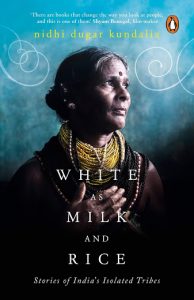Sudhirendar Sharma
It is a decade since unsuspecting women and men drinking at a bar in Mangalore were at the receiving end of unprovoked violence at the hands of the self-styled moral custodians, the-so-called valiant foot soldiers of Sri Ram Sena, who had held the group responsible for violating Indian values. During the weeks that followed the outrageous incident, its leader Pramod Muthalik had something altogether different to confront with. Hundreds of pink chuddies (underwear) had literally poured on him from across the country by women protesting vandalism on the Valentine Day.
As I recall this highly publicised incident of 2009, I wonder what might have the controversial recipient done with the colourful piece of underclothing? Not much is known though about how innumerable pieces of lingerie were finally managed and done with. Were these consigned to the neighbourhood garbage dump or disposed at a throw-away price with the local merchandiser? Burning the stockpile publicly would have meant adding fuel to the public ire! For once, the chuddy had come out in the open to attain a cult status, a new tool for peaceful protest.
Thanks to the novel form of protest initiated by a courageous bunch of women, Nisha Susan, Mihira Sood, Jasmeen Patheja and Isha Manchanda, the otherwise hidden piece of personal wardrobe was finally out in the public – a potent tool to garner public attention for a cause. A couple of years before the incident, Prince Charles had toasted the entry of the word chuddy into the English lexicon during a public dinner at the Windsor Castle in 2007. However, it took some twelve years before the poor chuddy passed several linguistic tests to find a pride of place in the dictionary.
Acknowledging that not one but several of these had virtually deluged the moral custodians from raising their heads again, chuddies and not chuddy has ceremoniously entered the Oxford dictionary early this year, along with other 650 new words. The popular catchphrase ‘kiss my chuddies’ by actor-comedian Sanjeev Bhaskar in his BBC sitcom ‘Goodness Gracious Me’ had come handy in letting the underpants slip through to make the final cut. It is now official, one can ask for chuddies without any hesitation during the next visit to the neighbourhood store.
The evolution of chuddies from a piece of private garment to a tool for public protest is undoubtedly inspiring. That a piece of personal wardrobe can spur a movement for equal rights for women has its place in history. The women who had triggered the ‘burn the bra’ movement of the 1960s in the US had done so as a symbol that showed independence of men at that time. Many women thought that it meant freedom to be natural and not pushed up, the ubiquitous piece of underclothing was consigned to freedom trashcans. Marred in anti-feminist controversy, the symbolic act didn’t live up to its promise though!
The chuddies seemed to have arrived on the global scene, it has gained recognition that was long due to it. Come to think of it, chuddies are what underpants are not. It is a symbol of freedom. History is all about symbols, and the symbolic chuddies must be taken as a serious critique of the way women continue to get treated in a man’s world. That ‘history is but a fable agreed upon’ must help the evolving story of chuddies be told and retold. Telling stories is what we humans are good at, and pink chuddies will surely make a good story now, and in future.
(Sudhirendar Sharma is a writer on development issues based in New Delhi, India)
Posted by Green Beacon at 9:40 PM, Monday, August 19, 2019




